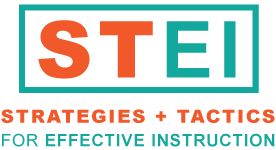Back to: Evaluating
According to Federal regulations, a student cannot be considered for special education classification, placement, or services until a school or district has shown, beyond a shadow of a doubt, that a student cannot succeed in the general education setting given supplemental aids and resources. That is, one must prove that instruction is not effective or needs cannot be met in the general education setting. It is not enough to say that a student is not progressing through the curriculum at the expected rate of progress or that behavior impedes the student’s learning. One must be able to prove it. To do so requires that interventions and strategies be implemented and their use documented over a period of time. And, a strategy or intervention does not simply constitute a phone call and/or parent or guardian conference. Too many students have been unnecessarily placed in special education. Use data to track of student progress. Effective teachers know that this is not only best practice but useful in making decisions about when additional help or services are warranted for a student. Gathering data and keeping records are important, not only for charting students’ progress, but also for making decisions about their educational programs.
consider normative peer comparison
Effective teachers keep track of and document their students’ progress. For target students or those with whom there is concern, this has dual importance. Not only does it guide and direct planning and delivering of instruction, but it facilitates decisions about the need for extra help. While it is not uncommon for students to have individual learning goals and objectives, there may come a time when the gap widens to an extreme. Keep records of all student performances in key curriculum areas, and use these data to make informed decisions about when particular students need program changes.
consider types of decisions and data needed to make them
Assessment data and classroom success or failure are used to clarify and verify the existence of educational problems in the areas of academic functioning, behavior, and social and physical development. Data about what has been tried in the classroom are key to making these decisions.
There are many kinds of decisions. They can be grouped into four broad categories-Prereferral Classroom Decisions, Entitlement Decisions, Post Entitlement Classroom Decisions, and Accountability/Outcome Decisions. Each category has its own set of considerations and components for gathering data to make the respective decisions. These categories and the presented framework can be used to make decisions in academic, behavior, social, and/or physical domains.
Many complex social, political, and ethical issues arise when assessment or tests are used to make decisions about students. Assessment and the gathering of class room data about what works and what doesn’t is serious business. It is critical that it be done correctly.
